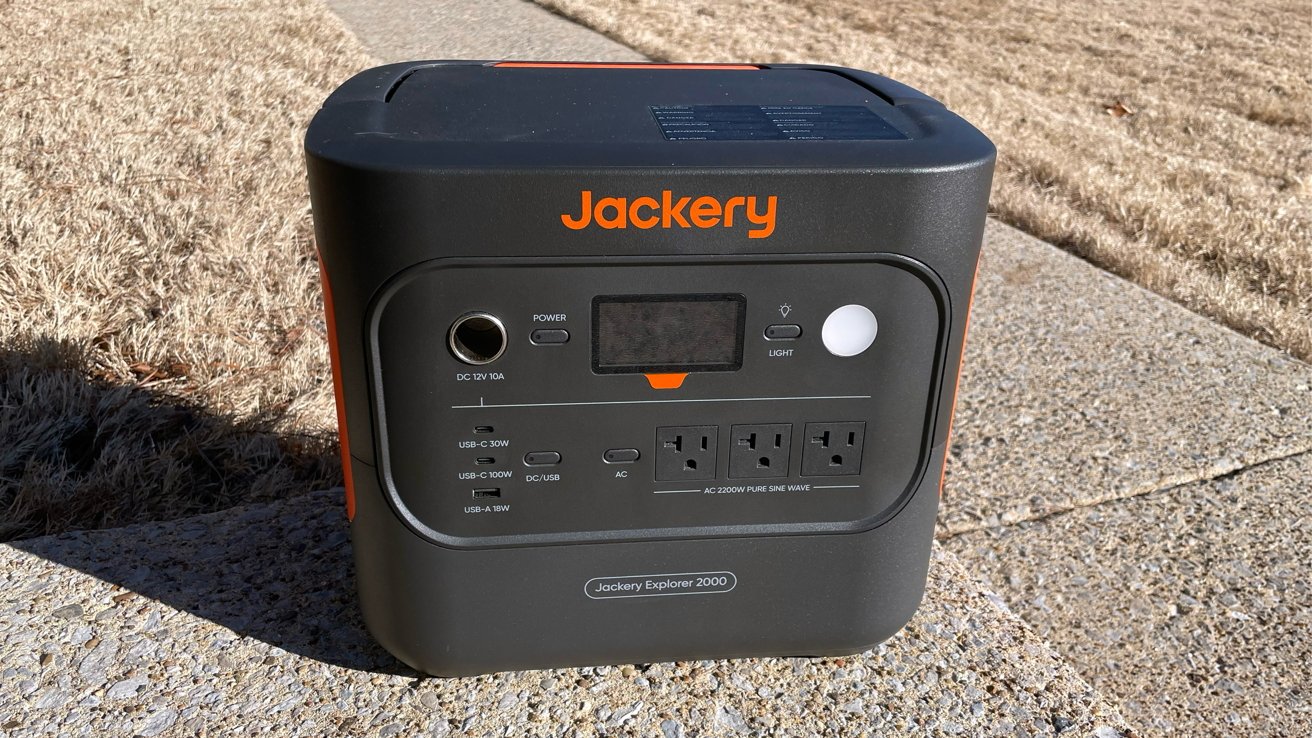The first review of 2025 is officially here and it is not one that you’ll want to skip over! This one takes a deep dive on the first “100% Tactile” switch - the Type R - developed in collaboration between Sillyworks and Gateron. Yes, these are actually tactile switches unlike anything you’ve ever seen before…
Despite how seemingly normal this review is likely coming across to you all right now on this normal, perfectly expected Sunday morning, it was anything but normal for me to prepare. Hell, I’d even go as far as to say that it was incredibly strange for me both to write and do all of my normal preparation work for. See, my normal workflow for reviews that are posted on any given Sunday starts on the Monday six days ahead of the posting and slowly unfolds over the course of the week leading up to the post. On Monday and Tuesday, measurement get taken, force curves get collected, and I begin my note taking process for the general review structure and underlying story that I may try and weave into it. On Wednesday and Thursday nights, graphs get made and notes are shuffled around into their proper places as well as some thorough soft outlining of concepts that I want to write about but may struggle to do from just the semi-incoherent notes I collected from the nights before. (Think of the ‘Background Section’ for example.) And then finally, Friday night rolls around after work and I get to sit down for the bulk writing process where all of the notes and outline pieces get fleshed out into massive paragraphs with plenty of run on sentences. This is then touched up on Saturday morning, with some photos taken that morning tossed into the review, and then polished off for uploading to the website for its Sunday morning debut. At least that is the normal workflow of things when college football doesn’t decide to have the two most important playoff games of the year on Thursday and Friday nights.

Figure 1: Internet hatred about the incorrect use of a cactus here be damned, it is a slick looking ad for Ohio State.
Having not only been born and raised in the state of Ohio, but also lucky enough to have attended The Ohio State University for my undergraduate degree, I can pretty confidently say that I’ve been a big fan of Ohio State football for the entirety of my life. Whenever autumn rolls around, I absolutely have to watch all of the OSU games all the way through, no matter how crazy, screwed up, or poorly coached they may be. Thankfully over the last handful of years there haven’t been too many games which were poorly coached, and thus it’s often that Ohio State stays a relevant team in national championship contention well past the normal end of college football for most teams. This season is certainly no exception to that. However, given the strange shifting around of the college football landscape and the introduction of a 12-team playoff to feed into the national championship, Ohio State found themselves poised to face the Texas Longhorns in the Cotton Bowl in the semifinal of this playoff on this past Friday night at 7:30 PM – the time when this review (and all other reviews that I’ve done for the past five years) would have been written. This, as you could imagine, put me in a bit of a stressful situation as I absolutely could not miss the chance to watch this game and also simultaneously could not skip a normal review writing weekend for switches as interesting as these. So instead, I crammed all of that review preparation process into just the first couple of days of the work week. Monday and Tuesday’s work was condensed into a very late Monday night. Wednesday and Thursday’s outlining and structuring was crammed into Tuesday night. And then, against all of the routine I’ve built up over the last few years, the first draft of this review was shoddily thrown together on Wednesday night. Ultimately knowing the result of how the Ohio State game went in a magical twist of Saturday-morning editing, I can say the stress and cramming was beyond absolutely worth it. I am not normally one of those people who yell at the television set, but the second that fumble in the fourth quarter bounced into Jack Sawyer’s hands I had to have woken up the neighbors. Irrespective of this more than worth it decision on my part, my strongly implied tone I wrote prior to the start of the game should be telling you that I likely won’t be doing this sort of review juggling again any time soon. It also threw off my internal workweek clock so much that I almost entirely forgot to set my alarm Wednesday night for work as I have mentally conditioned myself to think that writing night is the end of the week. So, if you notice any weird structural issues or typos in this one, you will have to go just a little bit nice on me. (It may also be because I’m editing this one through a celebratory hangover, as well.)

Figure 2: This is the exact moment that made all of the early week work worthwhile.
Switch Background
Whereas the last couple of months have had full length switch reviews featuring switches that came entwined with convoluted histories of manufacturers or totally not specific brands which often switch through numerous different manufacturers for every single switch release, this review here is going to take us back to a wholesome, much more simple tie-in for a background section – switch designers. Names like Invyr, Punkshoo, C3Equalz, 43Studio, and quite a few more that I’ve yet to cover in depth in a review all come to mind when thinking of switch designers, and equally as many have unique, twisting backgrounds which add a certain contextual flavor to their switches that are otherwise missing from bland, lifeless offerings from larger nameless corporations. Sillyworks, who has been referred to in some places as ‘Siliworks’ as of late, is certainly no exception to this list of individuals as they are both the designer of the Type R switches which have brought us together here today and a character in and of themselves. I myself have certainly came across this name more than a couple of times since they first popped onto the switch scene in 2022, though admittedly I was just quite missing out on a singular, solid opportunity to get around to detailing their background in one of these switch reviews. While their Type R switch collaboration with Gateron was certainly more than deserving of a review based on its physical attributes along, this strange week of review preparation shuffling that I’ve had to take on has also justified a recounting of Sillyworks’ history. This is because unlike most of the other named individuals in that list of designers above, Sillyworks has been overly forthcoming about their history, background, and plans moving forward – opting for out-of-the-gate publication of their origin and all of their thoughts about their switches making my research for this background section substantially more easy than it normally is.
On May 16th of 2022, an interest check was posted to ZFrontier offering a pretty mundane headline debut of a new switch by the name of ‘Sillyworks Hyacinth Axis’. (Axis being the Google translated Chinese to English word for “switch”.) While this medium-light weight linear switch to be made by KTT is certainly worth mentioning and will have some pretty important historical implications further on in this section, it’s actually the start of this post that stood out to me significantly more than any specifications of the switches themselves. Rather than starting off with some fluff or sales pitch about these switches, ZFrontier user ‘Sauceinmyveins’ introduced themselves as both A Xi as well as the owner of the Taobao store by the name of ‘HYPERBORING’. Ironically fitting of their original company name, this individual of many names went on to share that they had started HYPERBORING not only out of general boredom but an interest and enjoyment of designing keyboard-related products. Ostensibly done with that name as quickly as they introduced it in writing, this was then tossed to the wayside with the user stating their new name from hereon would be ‘Sillyworks’… and then they went right in to introducing their switches. No villain origin story, no sales pitch, and damn near nothing to be said save for a straightforward introduction of every name they’ve ever gone by and seemingly will go by moving forward. Despite the rather unique and nominally descriptive nature of this introduction, the remainder of the interest check post was actually surprisingly enlightening and thorough, with Sillyworks not only stating all of the specifications for the Hyacinth switches, but also their explicit desires and interest behind why they chose certain details for the length of the stems, housing materials, choice in manufacturer in KTT, etc. At the tail end of the post, they then went on to share a photo of some of the first prototypes of the Hyacinth switches which had already been developed prior to the release of the interest check. Featuring light yellow dustproof stems and a light purple over dark purpose housing way, Sillyworks stated that the final production run of the Hyacinths would not quite look like this, and instead would feature normal, non-dustproof stems in a green color as the dustproof stems “still felt a little rough when pressed at some angles”.
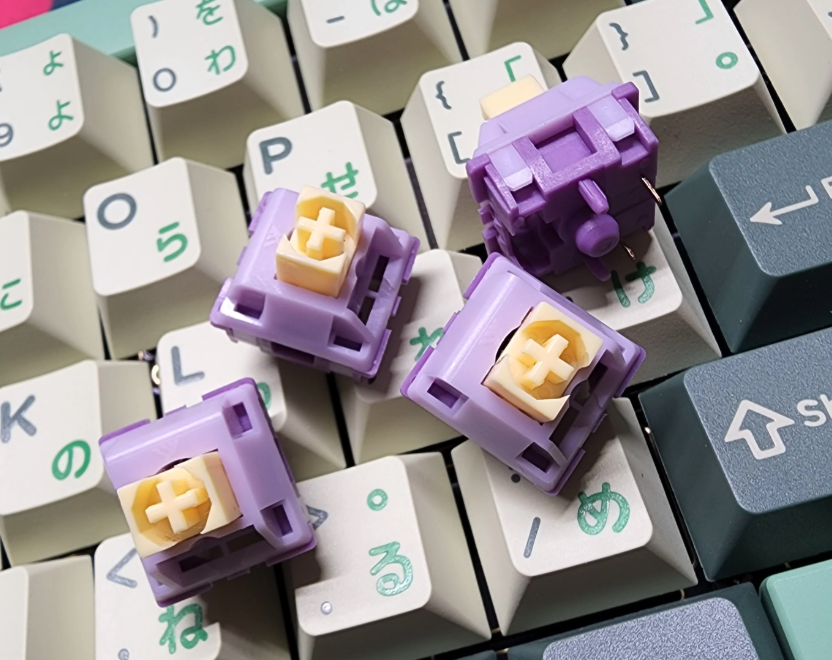
Figure 3: Photo of the KTT-made Hyacinth V1 prototype switches from Sillyworks' initial interest check post on ZFrontier.
Despite not having a specific groupbuy post to point to on ZFrontier for the original Hyacinth switch sale, its fairly evident through their trickling into western keyboard markets on top of all of the other switches you’re soon to read about from Sillyworks that this initial switch debut and personal rebrand was an overall success. Arguably these switches were so successful that Sillyworks was comfortable enough to announce their second switches not just as an interest check but a dual interest check and groupbuy announcement on January 7th of 2023. In this post, Sillyworks debuted the KTT-made ‘Waverider’ switches. While I could have spent probably a tiny bit more time looking into the commercial success of these Waverider switches, the subsequent non-interest check and non-sale post by Sillyworks a few months later on May 19th convincingly stole much more of attention during the planning of this section. Rather than talking about new switches (or even yet another personal rebranding) Sillyworks instead filled this post with a pretty slang-heavy accusation leveled at a prebuilt keyboard company/brand by the name of Metaphyuni. In this post, which is a tiny bit hard to parse due to Google Translate struggling with the contextual nature of slang phrases, it seems as if Sillyworks accuses Metaphyuni of either directly ripping off Sillyworks’ Hyacinth switch renders in the marketing of their new prebuilt keyboard or maybe even copying the switches explicitly in the actual physical boards as well. According to what I can make out of the translations, Sillyworks was in the process of developing a Hyacinth V2 switch with KTT in the months leading up to this post, but it was postponed for some unstated reason. Without any restarting of work on this second iteration of switches by Sillyworks, they were greeted with this marketing post that pretty clearly seemed to implicate that the idea was still being worked on elsewhere, just without Sillyworks’ permission. Not wanting to have his idea completely stolen, only a handful of days later on May 31st, Sillyworks posted a nearly complete interest check for the Hyacinth V2 switches complete with renders, marketing, matching keycap sets, a deskmats, and the tiny bit of information that these switches would be made by HMX and not KTT. While the official claim by Sillyworks was that this was done because of HMX being capable of producing switches with tighter tolerances and using more precise molds than KTT, the proximity of this revelation to this drama post calling out the theft of their switches at least implies that there may have been some ulterior motives by Sillyworks in moving manufacturers.

Figure 4: Marketing image of the KTT-made Waverider switches from Sillyworks from combined IC/GB ZFrontier post.

Figure 5: Metaphyuni keyboard and switch marketing render claimed to be either partially or completely copying Sillyworks' KTT Hyacinth V1 switches.
With the drama pretty squarely addressed and moved on from following that pairing of posts, only weeks later in June of 2023 a Hyacinth V2 groupbuy post was made on ZFrontier featuring real product photos of samples made not only with a green stem and purple housing, but also a custom designed ‘SILLY’ nameplate made by HMX. Not content with leaving these switches as is, Sillyworks went on to iterate on the Hyacinth switch design one final time in the form of the ‘V2U’ switches only a couple of months later. In addition to having tighter tolerances worked into the design of the top housings at the direct request of the Chinese keyboard community, these switches also seemingly had entire new production tooling created, leading to them being produced with a matte finish to the housings as opposed to the glossy ones present on the Hyacinth V2 switches. In the event that that differentiation wasn’t enough, the color of the switches was also adjusted one final time to a fully purple colored stem to both “stand for ‘Unity’” as well as “being voted on by “you” the community” according to the ZFrontier post. Despite these being the final iteration of the Sillyworks Hyacinth switches first debuted over a year earlier, these were arguably just the beginning for Sillyworks when it came to switches. Well, the publicly facing beginning, that is. On October 29th of 2023, and only a handful of months removed from the end of the Hyacinth line of switches, Sillyworks announced the debut of a project that they had been working on in conjunction with Gateron since February of 2023, long before both the V2 and V2U Hyacinth switch iterations. Titled ‘Project Rehash: SLAY Series’, this 17 revision and more than 3,000 sample collaboration with Gateron was built upon Sillyworks’ idea of creating a revamped series of switch molds that would not only emulate the original, fully opaque Gateron KS-3 switch housings but do so with improved quality and tolerances across the board. With the supposedly lightly tactile ‘Type Y’ switch still pending as of the time of this debut (as well as the time of writing this switch review here), the Sillyworks x Gateron Type S, L, and A switches were all introduced as linears built from the same molds though using different spring weightings and stem lengths to differentiate their feeling and cater to a wide range of hobbyists. Priced at 2.5 yuan ($0.34) per switch with estimated initial run sizes of 40,000 switches for each type, the Type S, L, and A switches were released to the public on October 30th of 2023.
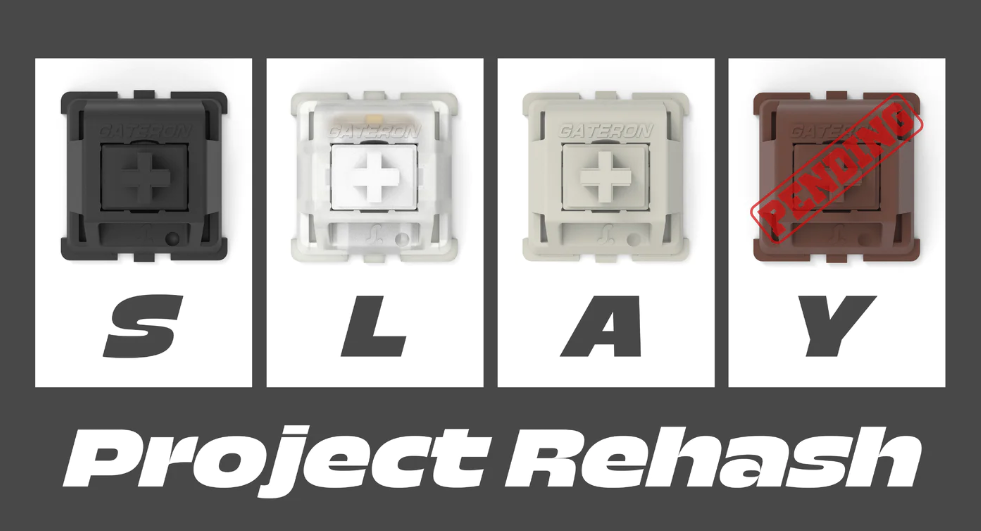
Figure 6: Marketing render for Sillyworks' Project Rehash: SLAY Series of switches as of their initial debut on October 29th, 2023.
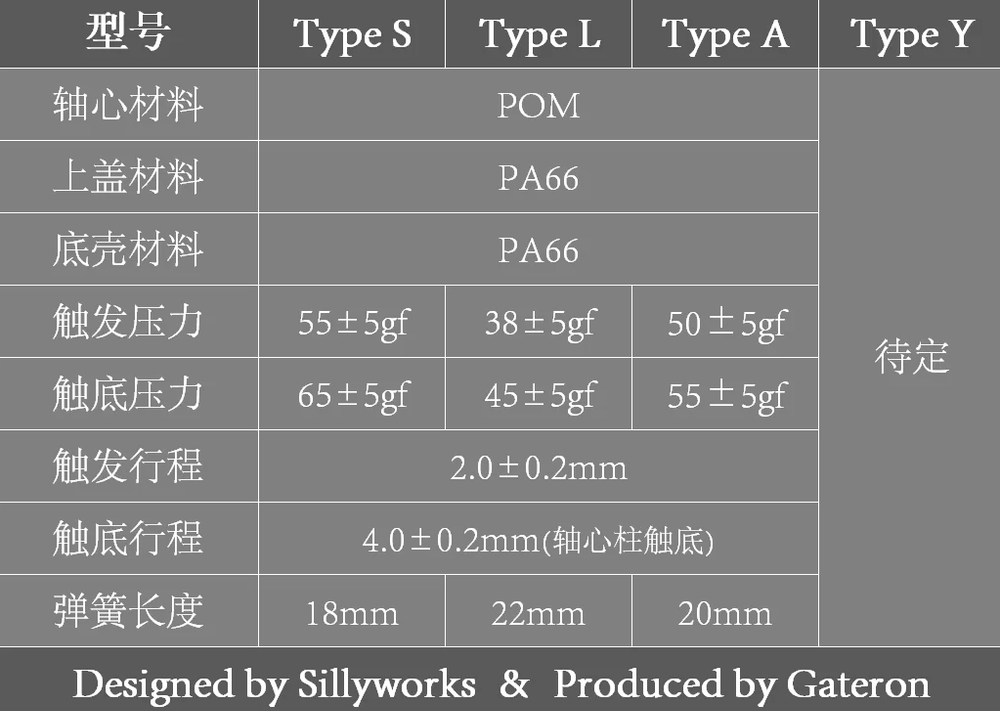
Figure 7: Chart from Sillyworks' Project Rehash introduction which shows the similarities and differences between the Type S, L, and A switches.
Completely jumping over the nearly simultaneous announcement of a switch collaboration with Nap Works that was pushed out onto ZFrontier on October 26th of 2023, we arrive at the Sillyworks switch release which is actually being reviewed here – the Sillyworks x Gateron Type R. Building upon the original name and theme of ‘Project Rehash’, Sillyworks expanded the ‘SLAY’ acronym of switches into ‘SLAYER’, with the Type L, Type E, and Type R switches all being tactile counterparts to the Type S, Type L, and Type A switches. While this move seems somewhat deliberate in practice, or at least reasonably so, its sincerity as a long term plan that was devised all the way back when the project was first introduced is somewhat undermined by a vague discussion in the announcement of the Type R switches which suggests that their specific design fell out of prototyping attempts for the Type Y. Despite this also being supported by the lack of any further discussion of a Type E nor Type Y tactile switch, the Type R does at least follow the concept introduced alongside Project Rehash by using the same series of Sillyworks and Gateron developed, KS-3 inspired housing molds. Rather than just producing a lightly tactile switch as suggested of the original Type Y marketing information, the Type Rs appear to have been developed as part of a suggestion by a friend of Sillyworks that they make a switch that was “100% Tactile”, or completely devoid of any linear region in their stroke whatsoever. With reported success in developing a unique, never before seen tactile as such, the Sillyworks x Gateron Type R switches were not pushed to a future sales release like the Type S, L, and A switches but rather offered immediately upon posting of the thread on November 16th, 2024 at a price of 3 yuan ($0.41) per switch and with an intentional “longterm reail plan” in mind. (Note that prices do range from this point up to ~ $0.50 per switch depening on where they are sourced from.) Given the general availability of the Type S, L, and A switches through some western facing keyboard vendors to date, as well as the availability of the Type R switches through several stores such as Unikeys, KBDFans, and Milktooth, I suspect that these tactiles will remain available for quite some time into the future.

Figure 8: Marketing photo of the Sillyworks x Gateron Type R switches from their debut ZFrontier post. Note the tube packaging design in the back which was also similar to those used for the release of the Type S, L, and A switches previously.
Type R Performance
Appearance
At the highest level, the Sillyworks x Gateron Type R switches come in a fully red construction with a darker red housing and lighter red colored stem that is surprisingly mundane in their color palette and yet surprisingly sophisticated and modern in their overall appearance. The most recognizable feature of the Type R switches, and by extension the other released switches from Sillyworks’ ‘SLAYER’ series of switches is that of the closed over LED/diode slot. While certainly uncommon to see nowadays, MX-style switches with closed over LED/diode slots date back as far as 2016-2017 with the most prominent examples in my memory being those of the Gazzew-backed Outemu ‘no slot’ housings which were sold as parts to be configured into complete switches. This original design tactic was carried out by Outemu as a means of minimizing housing wobble, though with the general mold precision and production tolerances of a company like Gateron in 2024, it’s pretty evident that this design choice was purely driven by aesthetics. It should be noted, though, that the original KS3 Gateron switches that supposedly inspired the mold designs of the Type S, L, A, and R switches did not feature these ‘no slot’ style housings. The claim for this being purely aesthetic in nature is also driven by the presence of a stylized ‘S’ logo for Sillyworks being present on the housings on this covered LED/diode slot. As a result of these features, it’s hard to mistake these switches for others even from a distance, and even if the colors were changed entirely they would be easily recognizable as having come from Sillyworks’ ‘SLAY/ER’ series from a mile away. Despite the Type R’s easily identifiable nature, there are still plenty of other details worth noting in the construction and sub-part details of these switches. Discussion of these details may be found in the paragraphs and photos below.
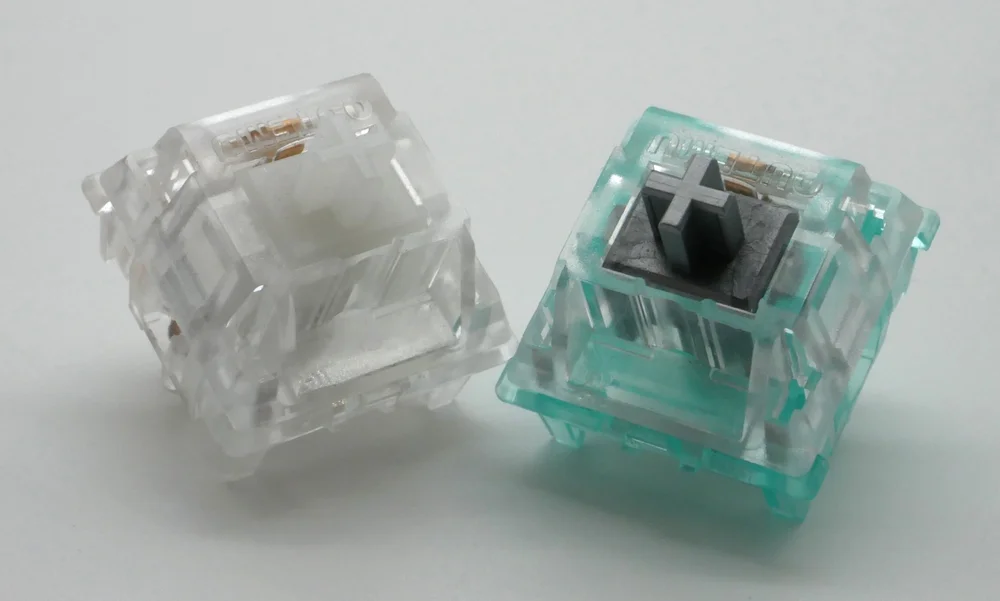
Figure 9: Example switches which could have been constructed using the Outemu 'No-Slot' tops and other components sold by Gazzew in 2017.
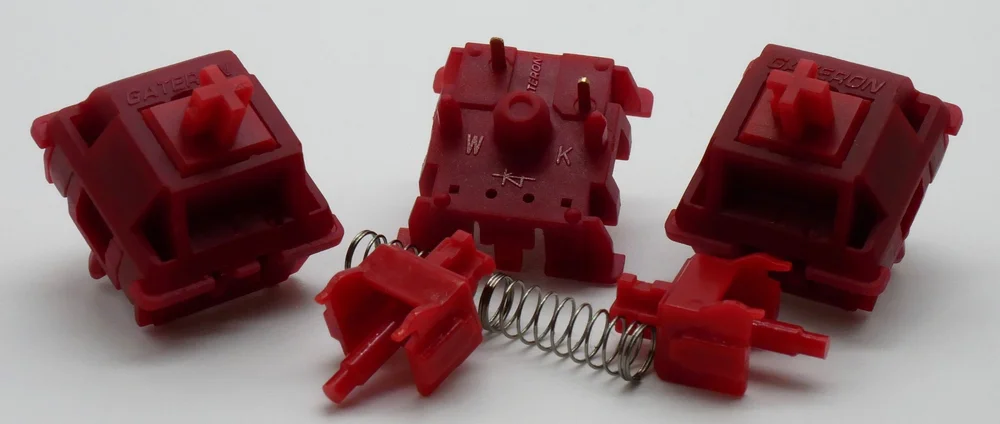
Figure 10: Sillyworks x Gateron Type R switches and their components.
Starting at the dark red, opaque nylon housings of the Sillyworks x Gateron Type R switches, we’re greeted with a slew of external features that make these switches easily stand out from the crowd and clearly demonstrate their unique mold development. Already discussed above is that of the Sillyworks-branded covered LED/diode slot, which is further interesting as making these (as well as the Type S, L, and A switches) among a small group of Gateron-made switches to feature either full or partial alternative branding. (Other examples being switches such as the Rantopad Oranges and Zeal’s 3-in-1 Clickiez, the ‘Everfree’ and NuPhy lines of switches, and Steelseries’ Omnipoint switches). Despite the fact that the molds are new and were clearly developed for Sillyworks and their the ‘SLAY’ series of switches released in 2023, the housings do not feature an inverted ‘GATERON’ nameplate – something which has been present in almost all Gateron-made switches with recently developed molds as of 2022. Interestingly, despite their ostensibly new design and construction, internally the top housings of the Type R switches do not have any features which stand out as unique. Even the mold markings for the top housings are still located in the upper corners underneath the nameplate region and feature two capital letter mold markings like most other Gateron switches. While it is certainly possible that there are more features in these top housings which could provide for better tolerances, a tighter fit, or aid in the overall feeling of the housings when it comes to topping out, none of those features are immediately apparent to me even upon close inspection.

Figure 11: Sillyworks x Gateron Type R top housing external design featuring closed over LED/diode slot with stylized Sillyworks logo and right side up 'GATERON' nameplate.
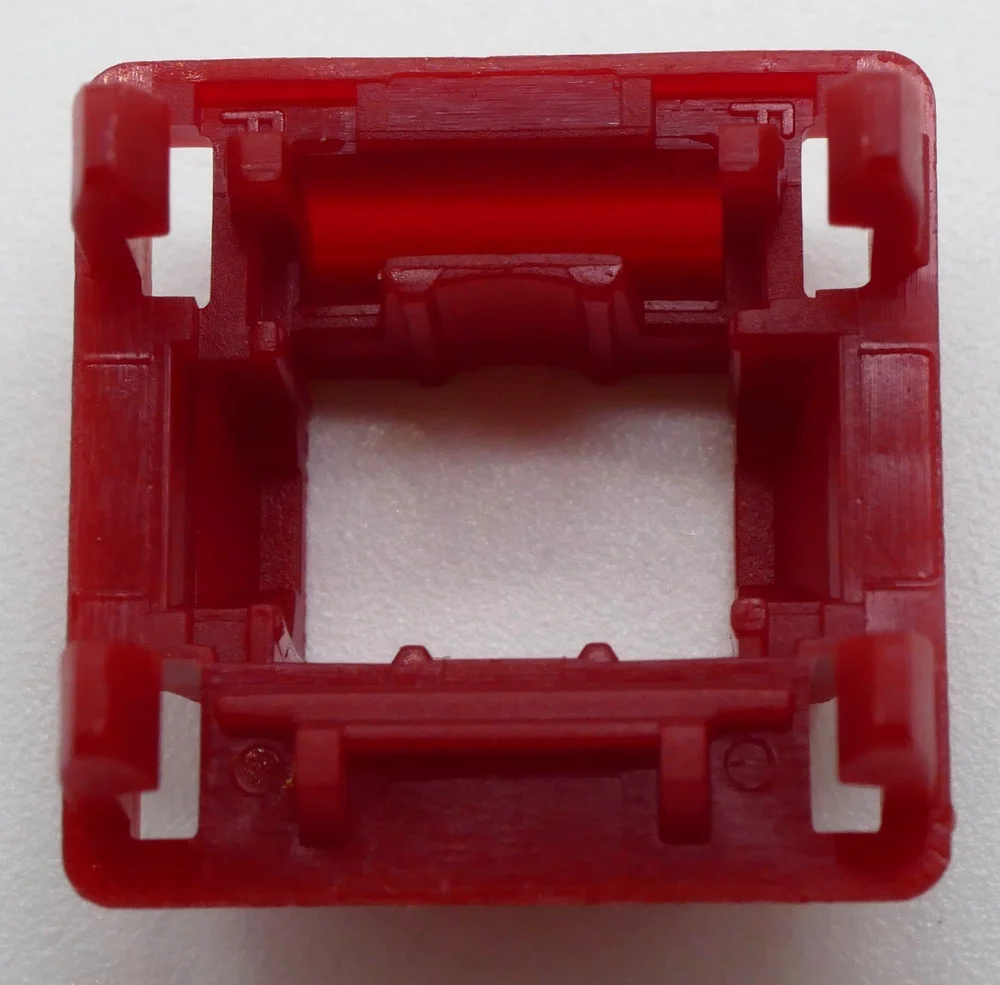
Figure 12: Sillyworks x Gateron Type R top housing internal design showing lack of obvious performance improving design details and standard capital letter mold markings in the upper left- and right-hand corners.
Moving next to the lighter red POM stems of the Type R switches, we are met with a few design features that are surprisingly simplistic and commonplace of Gateron despite the stems being assumedly developed from the ground up for these tactile switches due to their unique nature. In similar fashion as that of the right-side-up ‘GATERON’ nameplates on the top housings, the stems of the Type R switches feature non-tapered slider rails and a pretty thick tiered, but not tapered center pole to the switches. With a pair of mold ejector circles on the front plate of the stems and a minor, evenly distributed amount of factory lube on them, these stems wouldn’t look all that out of place for switches made by Gateron as early as 2020 to 2021. Strangely enough though, these more ‘classical’ design elements almost seem anachronistic compared to the advancements and general trends in design in switches over recent years. As for the tactile bumps of the Type R stems, which can be seen below in Figure 13, these too do not look all that unique or standout despite the fact that they were designed to deliver a feeling that is purely tactile and without any linear travel whatsoever. In fact I would be hard pressed to think that you could show a photo of these stems to anyone and convince them based on these features, alone, that these stems would be what can produce a sub-3.00 millimeter travel distance with all tactility in no linearity in a switch.
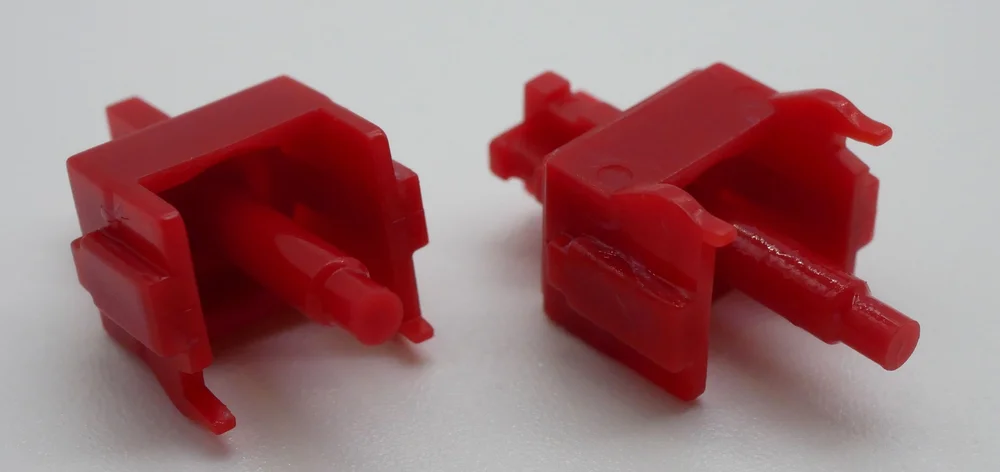
Figure 13: Front and back side of the Sillyworks x Gateron Type R tactile stems showing presence of factory lubing, lack of slider rail tapering, and thick, tiered center pole.
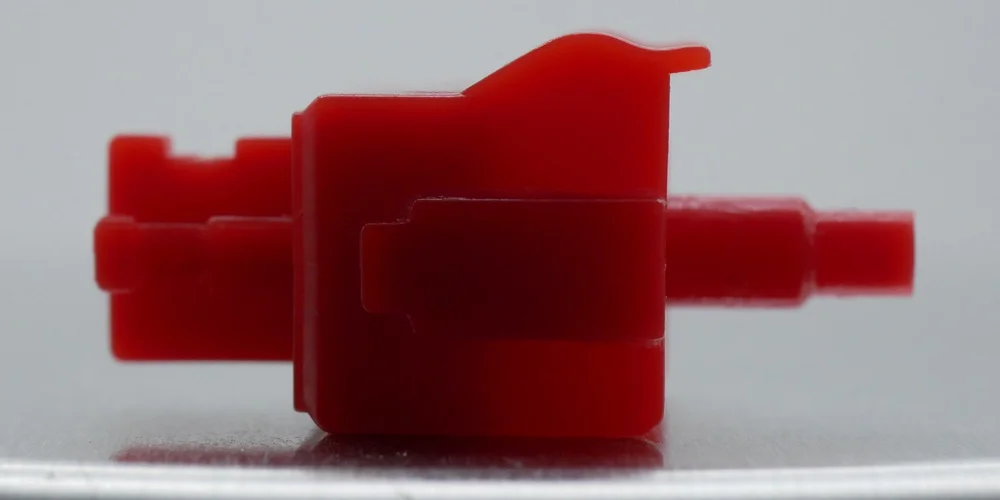
Figure 14: Side profile of the Sillyworks x Gateron Type R tactile stem.
Finally arriving at the darker red, nylon bottom housings of the Sillyworks x Gateron Type R switches, we finally encounter design features which clearly denote these switches as having been developed at some point past 2022. Internally, these housings feature a pretty large, curved south side spring collar, a pair of centered bumps below the slider rails that act as dampening pads, and a generous amount of thin, white factory lubing that clearly stands out against the dark red housing color. As well, the LED/diode slot below the closed over region from the top housing is completely filled out and features risers between the 1/2 and 3/4 LED/diode holes which would ostensibly prop up an in-switch diode if those were realistically still in use in modern mechanical keyboards. Externally, the Type R switch housings come in 5-Pin/PCB mount variety only and feature two capital letter mold markings close to the center pole as is common in collaborative Gateron releases. Additionally, the Type R bottom housings feature a raised, ‘GATERON’ anticounterfeit marking that runs sideways between the two metal PCB pins and has been seen in a wide number of their releases since the Stealios Controversy.
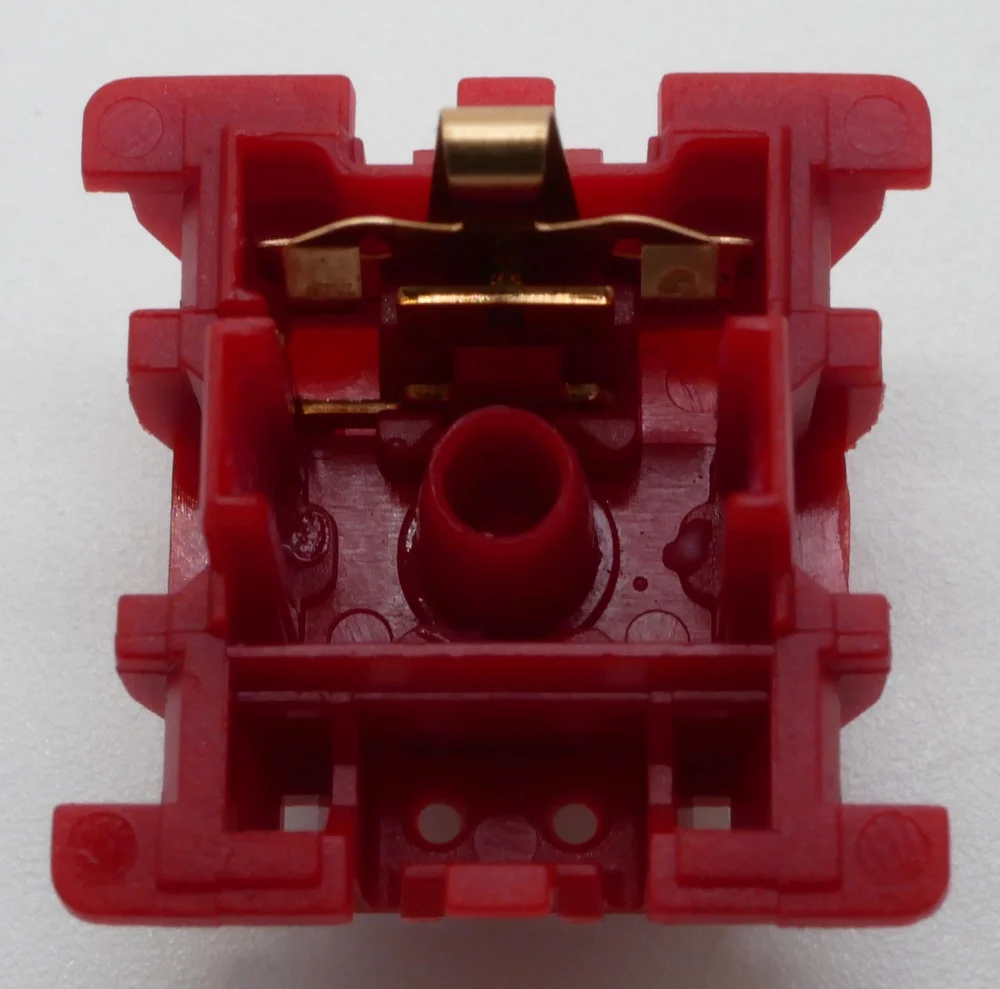
Figure 15: Sillyworks x Gateron Type R bottom housing internal design showing presence of factory lubing, portions of the sloped south-side spring collar, and dampening pads at the base of the slider rails.
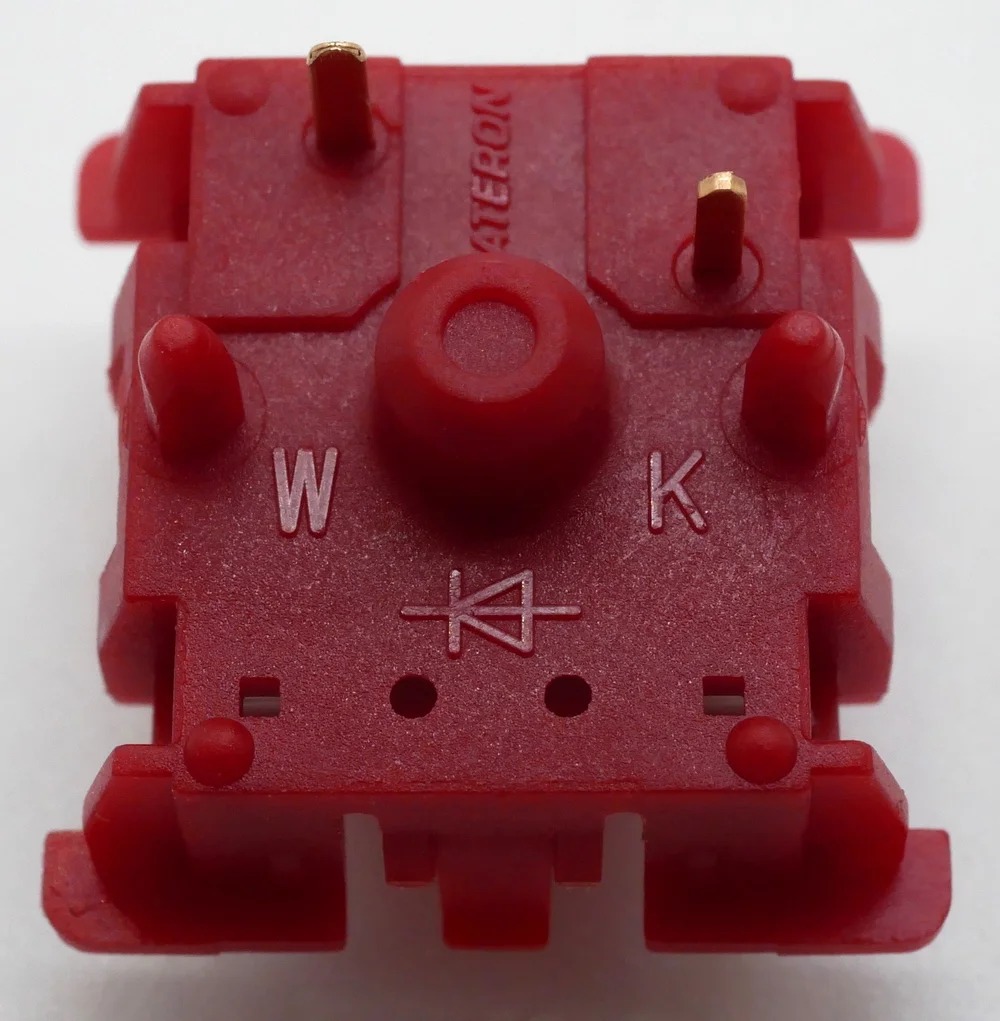
Figure 16: Sillyworks x Gateron Type R bottom housing external design showing PCB mounting pins, two capital letter mold markings, and sideways 'GATERON' anticounterfeit marking between the metal PCB pins.
Push Feel
Of all of the switches that I could have possibly covered from Sillyworks in a full length review, the Type R switches were far and away the most unique switch to pick purely based on the premise that they were marketed on. For those of you who did not see any marketing or discussion about the Type R switches prior to making your way to this part of the article, the Sillyworks x Gateron Type R switches were marketed in their initial ZFrontier posting as being the first “100% tactile” switch. That’s right, a tactile switch that has absolutely no linear travel in it whatsoever – not before the tactile bump and certainly not after it, either. While I had thought I had genuinely heard of every possible marketing gimmick that could possibly exist for tactile switches after nearly 8 years of collecting switches, I can say with confidence that the thought of such a switch had never even crossed my mind. And yet, here we are. Despite my initial skepticism when I was first met with this marketing claim, in hand I am shocked to report that the Type R switches actually do feel as if they are truly only tactile. What’s more impressive than the fact that they feel this way is that they also have force curves that numerically back up these marketing claims as well:

Figure 17: Force curve diagram for the stock Sillyworks x Gateron Type R switch.
The Sillyworks x Gateron Type R switches are medium to medium-ish tactile switches with a wide tactile bump that do, both demonstrably and subjectively, have a tactile bump that takes up the entirety of their downstroke. There is no linear pretravel nor post travel in these switches and the instant that you begin pressing down on these stems you’re set on a rapid course for two and only two feelings – the wide tactile bump and the snappy, firm bottom out. Throughout the downstroke these switches are not exactly the smoothest and do have some amount of small grain scratch to them despite the abundance of visible factory lubing shown above, though admittedly it is a bit hard to notice when using them under normal condit





